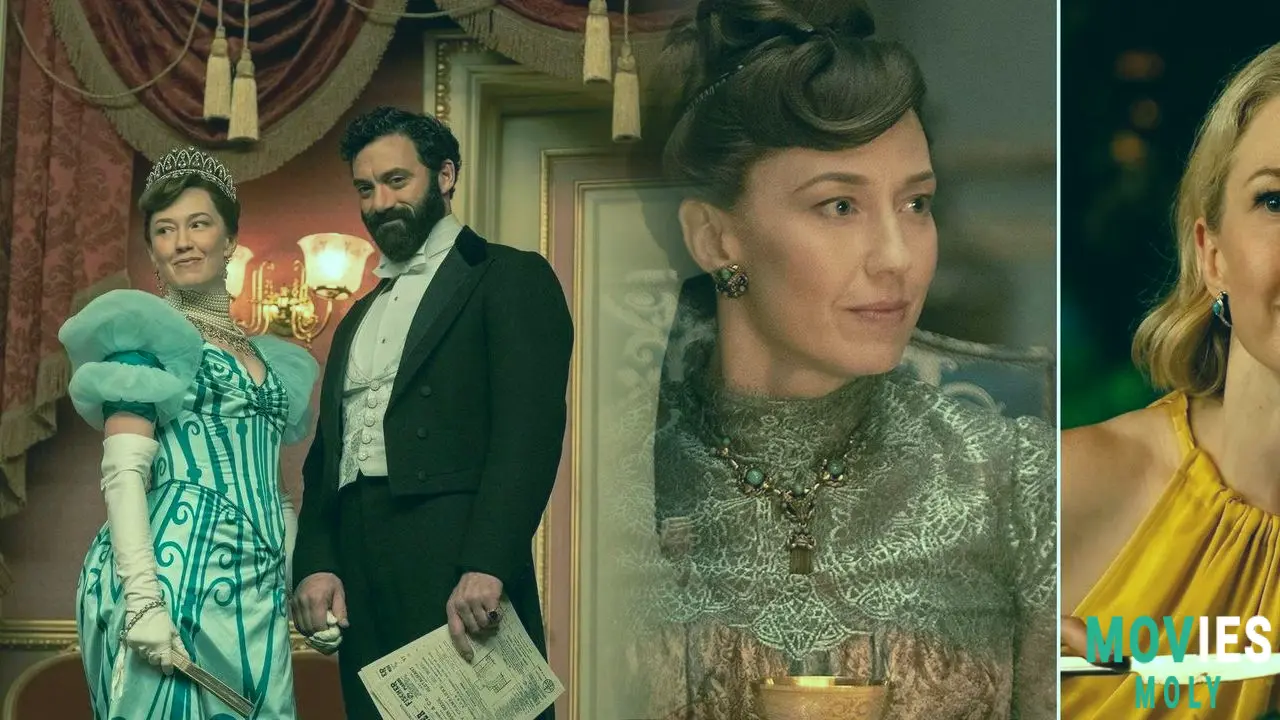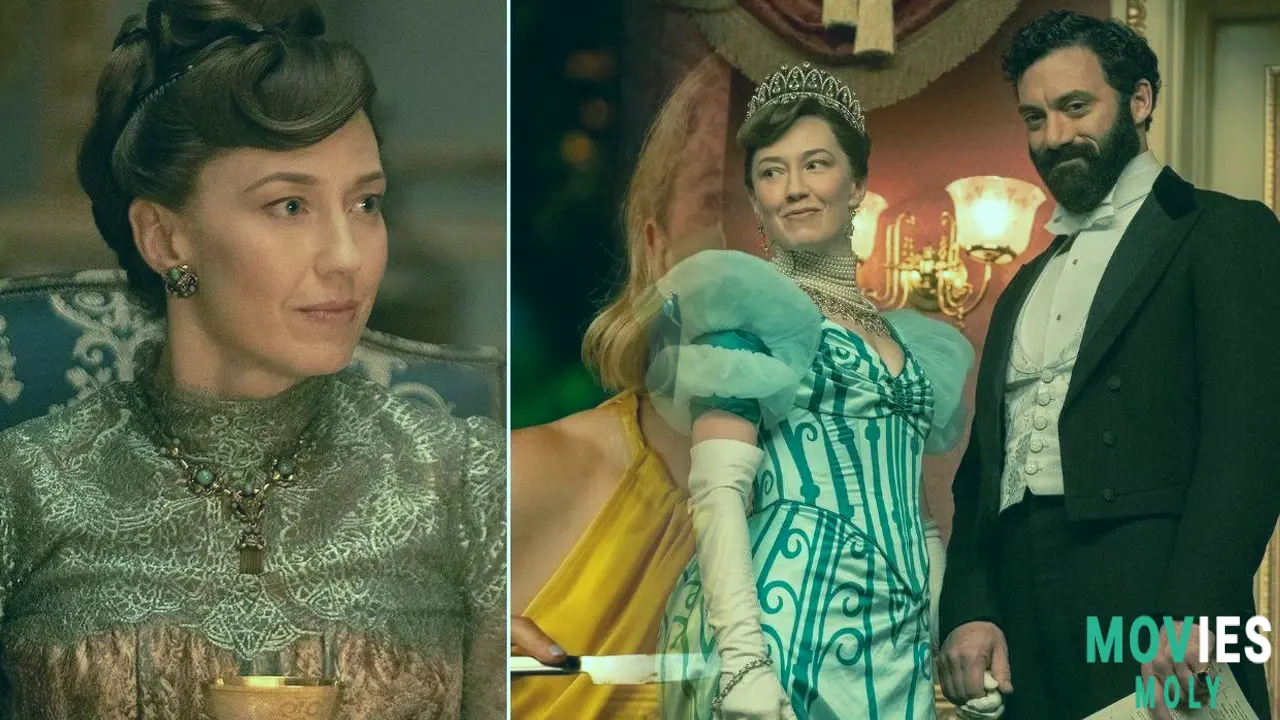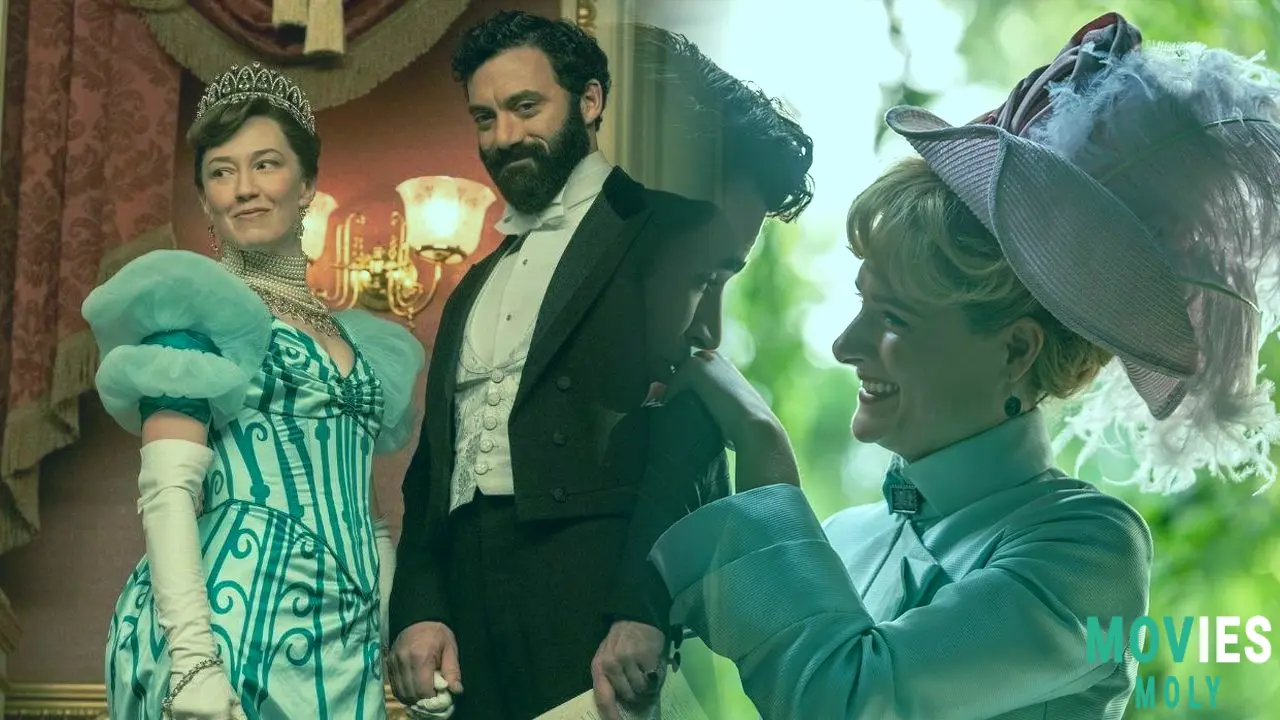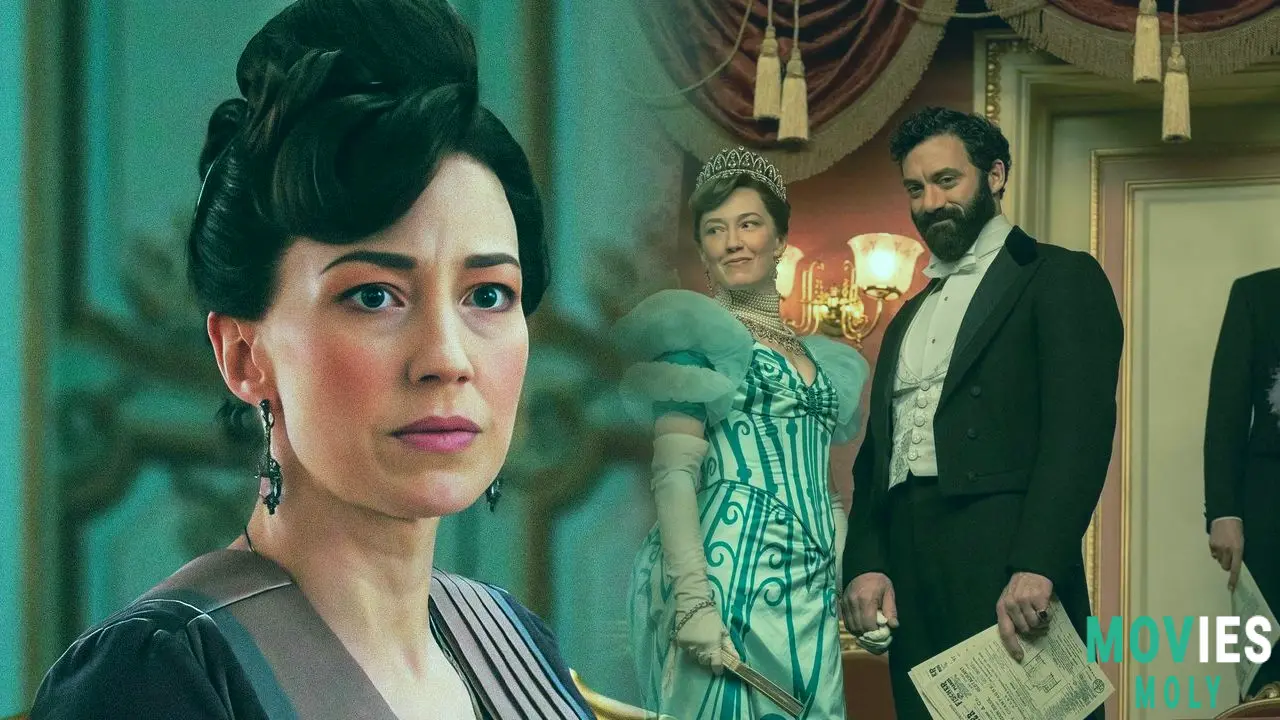If you're like me, you enjoy settling in for a new season of The Gilded Age. The show has a way of making the minor aspects of 1880s New York society seem as significant as the major historical events. This third season, which premieres on HBO on June 22, brings about a significant change. The power dynamic between the van Rhijn sisters, Agnes (Christine Baranski) and Ada (Cynthia Nixon), is flipped upside down. At the end of last season, Agnes' son Oscar (Blake Ritson) squandered the family riches in a horrible fraud. At the same time, Ada, who typically just wants to do good, received a surprising fortune from her late husband, Robert Sean Leonard. Cynthia Nixon herself spoke about the shift. She stated that before filming, they had fun speculating what Ada might do with the place. She even worried if Ada would transform her magnificent home into a soup kitchen.
Ada has, in fact, taken up a number of charitable undertakings. One of these is moderation. In one incident, Ada was attempting to persuade her servants to sign a vow to stop drinking. Agnes was really unhappy about this. Christine Baranski made a remark about a Brit's devotion to "the queen and the bottle, not necessarily in that order." Meanwhile, the crew cooed over Ada's Cavalier King Charles Spaniel. When questioned about working with the dog, Baranski, channeling Agnes, replied, "No comment."
These are typical scenarios for a Gilded Age narrative. The minor things are equally as significant as the large ones. Much of the first season was devoted to Bertha Russell's (Carrie Coon) efforts to invite the stuffy old elite to her daughter Gladys' (Taissa Farmiga) dance. Other major narrative aspects were discovering that a French chef was not truly French. Another had a dedicated servant attempting to obtain a patent for an alarm clock. And we all remember Agnes's dramatic choice to cross the street simply to speak with the Russells in person. Kathryn VanArendonk, a New York critic, famously remarked that in The Gilded Age, things that should be huge don't matter. These include large-scale labor movements, marrying late in life and promptly becoming a widow, racial segregation, the development of electricity, and financial bankruptcy. Things that don't matter at all are portrayed as major calamities. What's interesting is how the show sometimes lets us in on the joke. At other instances, it portrays the serious drama of incorrectly prepared soup fully straight. It's comforting to watch. It may also be winking at us about those conveniences, depending on how you look at it.
Filming Challenges and the Hunt for More Historic Mansions in New YorkThe production team faces unique challenges while bringing the Gilded Age to life on screen.
The Gilded Age production takes historical authenticity very seriously. It has discussed union struggles, the construction of the Brooklyn Bridge, and the fight over New York City's most prominent opera company. Erica Armstrong Dunbar, a professor and the show's historian, discovers ideas in old newspapers. She especially enjoys gossip pages. This season examines the emerging societal rules surrounding divorce from that time. The creator of the program, Julian Fellowes, stated that his "fantasy is always that the audience runs and looks things up on Wikipedia and then reads books about it."
Table manners are also quite crucial on set. Carrie Coon routinely reminds guest stars to hold their drinks by the stem. This way, they don't have to retake any shots. Cynthia Nixon, who was filming this season while concurrently working on And Just Like That, discovered that her Gilded Age manners had grown so strong that she picked up a coffee glass from its saucer on the other set. She said, "I thought that was nuts. Miranda wouldn't do that."
The show shoots swiftly, often in multiple locations at once. The team constructed a replica of an Upper East Side street. They also have standing sets for the Van Rhijn and Russell homes on Long Island. They also shoot on location in Newport. The Gilded Age visits Newport throughout the spring and fall, when there are fewer tourists. They use historic homes there. The Rhode Island Film Commission and the local Preservation Society provide enthusiastic assistance. Executive producer David Crockett revealed how the show creates its own great estates from existing locations. For example, the kitchen of the Elms, a genuine home, serves as the Russell family's New York kitchen. A room at Marble House, another mansion, is utilized as George Russell's (Morgan Spector) bedroom. The details are complicated. Directors must carefully frame their shots. They do this to avoid implying that one character's passageway leads to another's dining room. They also have to ensure that no contemporary protective floors or handrails are in the shot. The production made full use of practically every available space. They are continuously seeking for methods to get to another old home nearby. According to production designer Bob Shaw, "We're running out of mansions." He continued: "They had a lot of parties and a lot of balls, and it's like, Well, how's this one going to be different from the other?"
Peggy Scott's Broadening Storyline and The Gilded Age's Commitment to Diverse Narratives

Newport's Black Elite and Denée Benton's Excitement about Her Character's Journey
Dunbar's research has influenced fresh ideas for Newport stories in the upcoming season. Dunbar, actress Denée Benton (who plays Peggy Scott, the major Black character), and writer Sonja Warfield collaborated to expand Peggy's position. In previous seasons, Peggy attempted to live independently from her wealthy parents, played by Audra McDonald and John Douglas Thompson. Her stories occasionally felt like teachings. In one, she journeyed south to cover the Tuskegee Institute. This season, the story follows Peggy and her family to Newport. There was a huge, rich Black community living there at the time. McDonald's character appears "nouveau riche" to a new character played by Phylicia Rashad. Rashad is the main figure in Black Newport society. She delivers some snappy, humorous phrases in the Fellowes way. Benton filmed in Newport, but McDonald's sequences were shot in New York. There, she had to train for a theater role. Benton characterized the episode as "another blossoming of the work that Dr. Dunbar and I were able to do with Julian and HBO before the production for season one to widen the lens on the Black stories within the gilded age." She was overjoyed to see Peggy, who had "been through it," feel some tenderness. She gets to wear a lovely gown and go to her own dance. Benton went on: "It's always been a dream to have a Black ball at the level of the balls we see at the Russell house."
The Russell Family's New Conflicts and Carrie Coon's Relationship with the Show's Fans

Bertha's Fierce Drive and the Actors' Thoughts on Playing a Relationship Under Pressure
On that same Friday night at the Russell soundstage, everything is as spectacular as ever. The Russell family actors are surrounded by large spaces that resemble airplane hangars. These rooms include massive stairs. The mood is really regal. In the same edifice, a section of an opera house floats above everything. It features a green border, which is ideal for special effects. In comparison, the old-money van Rhijn mansion appears fairly modest. The performers with different stories rarely interact. Taissa Farmiga, who plays Gladys, the Russells' daughter, did not meet Benton until a picture session earlier this year. She quipped that she has become accustomed to her character's opulent abode. When she briefly visited van Rhijns' set, "I was like, Damn, they got the short end of the stick."
While the turmoil in the van Rhijn household revolves around Ada gaining authority, this season's struggle for the Russells is around Gladys' marital chances. Before production wrapped for the weekend, Coon and Spector were filming takes of an altercation. Coon portrays her character Bertha with the might of a charging army. Bertha came from poor beginnings. She is determined to make a place for her family in high society, whatever the cost. Bertha decided to focus on finding a marriage for her daughter at the end of last season, after securing the backing of New York's elite for her chosen opera company. She wants Gladys to marry an unsuitable British duke in order to secure his title. Bertha is wearing one of her most eye-catching outfits in this scenario. Kasia Walicka Maimone, the show's costume designer, estimates that each of these costumes takes roughly six weeks to complete. Bertha asks probing questions of her husband, who sips whiskey and appears grumpy. The scene includes a lot of information sharing, which they do with a nice sense of humor. They improvised conversation for the silent shots. They whispered things like, "There must be something to be done about this, surely." "Not for me, surely." "Who's Shirley?" A fight between Bertha and George is unusual. In previous seasons, the Russells enjoyed a modern and supportive marriage. Spector elaborated: "Part of the joy for both of us has been playing a marriage that works." He explained: "Moving into a place where we're in conflict for the majority of the season, it's not fun."
Coon and Spector are also preparing for how fans will respond. Even though the characters are chilly capitalists, this dominant duo is popular among fans. People have even created "RAILROAD DADDY" t-shirts for George. Spector stated he considers himself a socialist. "A lot of socialists advocate reading the Financial Times and Bloomberg News so that you can understand how the actual world of capital functions, and I've taken that advice," he told the audience. "Watching this show and thinking about these people is useful for the same reason." Coon and Spector are two of the most popular actors with the show's internet fanbase. Coon has revealed behind-the-scenes photographs. One shows her eating pizza while wearing a corset. On the red carpet in February, she praised "the gays" for helping the show win a third season renewal. "I see everything," Coon stated with Bertha-like intensity. "I guess I would call it exposure therapy."
What Does the New Season Mean for The Gilded Age's Favorite Characters?

Continuing Stories of Ambition and Relationships in New York's Changing Landscape.
In late October, the show's presence in Newport is highly visible. In one mansion, I noticed two crew members staring at what appeared to be an ancient mirror. They questioned each other, "Is this ours or theirs?" On a run along the Atlantic-facing Cliff Walk in front of those residences (which Coon recommends for exercise), I noticed background actresses in maid uniforms getting off buses on their way to set. Coon informed me she took a Gilded Age-themed tour of Newport for fun while they were filming. She assumed that wearing a baseball cap would obscure her identity. Nevertheless, "one young man recognized me and then he took me on a tour because he knew all about the house!"
Sonja Warfield, the show's co-writer and executive producer, explained, "I think thematically the whole season [is] about who's in charge; who's in charge in society, who's in charge of marriages, who has the power." She feels that power transfers are fundamental in all stories and characters. This series continues to look at universal issues including love, death, and marriage. Even though the characters lived in the 1880s, the topics are pertinent today. Season 3 of The Gilded Age promises to deliver more of what we enjoy. It will indicate significant modifications for all of the characters. The show strikes a mix between focusing on society's elite and following the more grounded lives of folks like Peggy Scott. It provides an intriguing perspective at a period of rapid societal transformation. I know I'll be watching to see how the drama unfolds.




